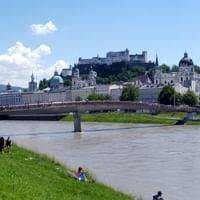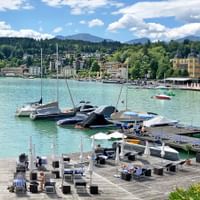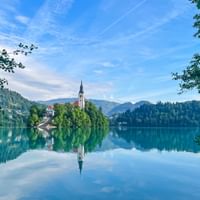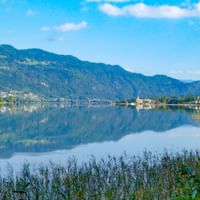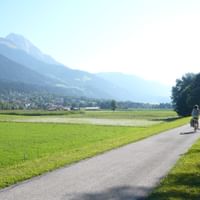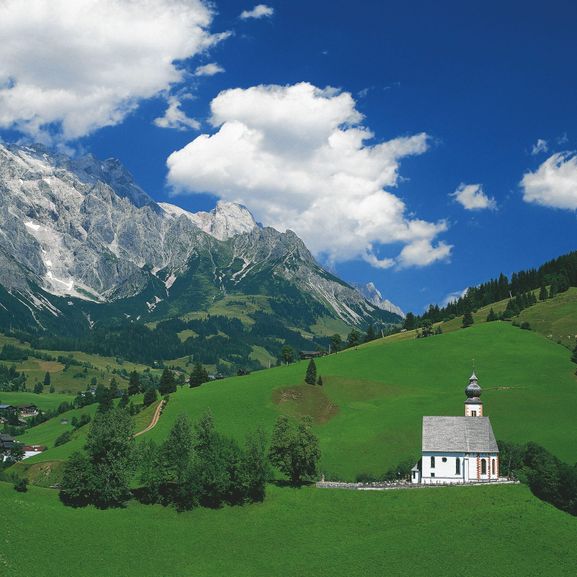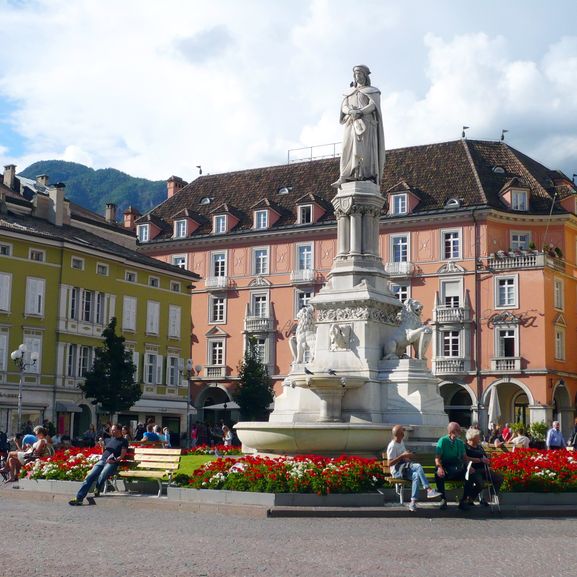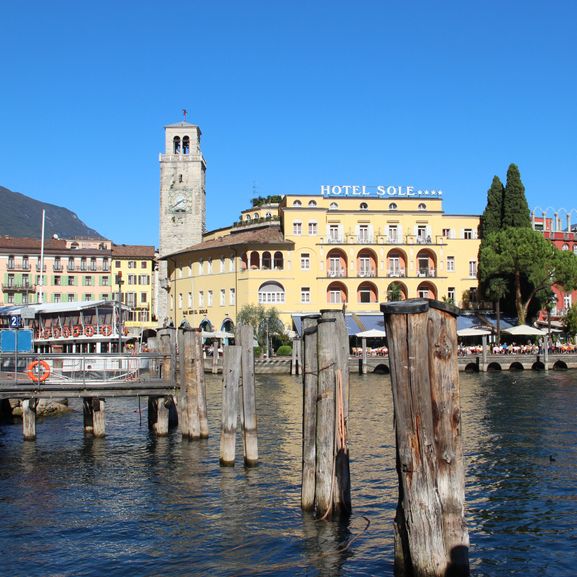Cycling holidays across the Alps to the Mediterranean
Biking tours across the Alps to the Adriatic Sea
A crossing of the Alps is a special kind of cycling experience, as it combines the beauty of the mountains with the Mediterranean flair of the Adriatic Sea. There are two routes to choose from.
Salzburg-Grado: You start in Austria's famous Mozart city. Wonderful cycle paths lead you along the Salzach to the wildly romantic Gastein Valley and the Hohe Tauern National Park. Surrounded by impressive high mountain scenery, you cycle in Carinthia on the Drau cycle path, which has been awarded 4 stars by the ADFC (General German Bicycle Club). In Italy, too, the cycle path is well developed and leads through the natural beauty of the Friulian Alps to Udine and on to Grado to the Gulf of Venice.
Dolomites-Adriatic Sea: The starting point of this cycling tour is Alta Pusteria in Austria. You follow the Drava cycle path in front of the impressive mountain scenery of the Sesto Dolomites and the Gailtal Alps. Look forward to Slovenia. The cycle path takes you along an old railway line through an idyllic, partly untouched natural landscape. In Italy, you cycle through small, fine wine-growing areas to the coast, whose white cliffs rise vertically above the sea, all the way to Trieste.
Sea ahead! Cycling from Salzburg to Grado
On this bike tour you cycle from Salzburg on well-developed and perfectly signposted cycle paths and small side roads to Grado on the Adriatic. Rarely do you drive on unpaved roads or high-traffic roads. The route runs slightly hilly through Austria and Italy with a larger climb at St. Johann, which can also be covered by train.

Highlights between the Alps and the Adriatic
In terms of highlights, this bike tour is almost impossible to beat. To name just a few of the most wonderful sights: in the Mozart and UNESCO city of Salzburg you will find the imposing Hohensalzberg Fortress, from which you will have a fantastic view of the Baroque Old Town and the surrounding area, the enchanting Mirabell Castle with its Baroque pleasure garden and of course Mozart's birthplace. The route leads directly to old Bad Gastein villas, which testify to previous visits to the Haute Volée. Bad Gastein has the reputation of being a “Monte Carlo of the Alps”. In Villach you can climb the 239 steps of the 94-metre-high parish tower of the Jakobskirche for a good overview. The highest tower in Carinthia offers views all the way to the Julian Alps. You can also stroll through the streets of the pretty old town.
The Italian Venzone was completely rebuilt after the 1976 earthquake. The green double city wall from the 13th century also looks like new, as does the Gothic cathedral. Udine, the capital of Friuli, boasts the New Castle, built in 1556, which houses museums and the art gallery, and the painter Tiepolo. In the Gallerie del Tiepolo and in the cathedral of the city, many of his works can be admired. The small church of Santa Maria in Castello with the golden archangel San Daniele on top is the symbol of the city. Visit the huge Piazza Grande Palmanova, once planned and built as an ideal fortified city to protect against the Turks, and definitely the UNESCO World Heritage Site of Aquileia. The mosaics in the Basilica of Santa Maria Assunta are fascinating. The 760 sqm mosaic floor from the 4th century. is considered to be the largest early Christian mosaic in Europe. Not far away is the ancient inland port. And finally you reach Grado, the former seaport of Aquileia with its pretty old town.

Classic, Jazz and Alphorn
Music! In Salzburg, everything is Mozart. Perhaps you will attend a concert at Mirabell Palace, the Festspielhaus, the Residenz or one at the Hohensalzberg Fortress. Concerts of classical music can be found all over the city. In addition to Mozart, Bach and Strauss are also popular. Bad Gastein lures over the summer with classical chamber music concerts in the Kursaal and various concert series. For jazz fans, the Summer Jazz in the Merangarten is the perfect choice. In Grado you can visit festivals, festivals and music events in the Basilica, on the Lungomare Nazario Sauro or in the Arena of the Parco delle Rose. Life is music! If you prefer traditional customs, you should listen to the alphorn sounds.

Kaffeetscherl and Caffè, Kaiserschmarrn and Kasnocken
Go to a Kaffeetscherl in Salzburg and enjoy Austrian coffee specialities such as Einspänner, Melange and Franziskaner. I'm sure you'll like a Mozart ball. Enjoy a Brettljause with local specialities, Salzburger Nockerl or Bauernkrapfen on your way through Austria. Kaiserschmarrn, Kasnocken and apple strudel are other well-known delicacies. In the Carinthian Schanigarten there are Carinthian Kasnoodeln with brown butter, with a summer splash, please, gnä Frau.
On the Italian side, you should try Friulian delicacies: Polenta (maize porridge) or Frico, a dish made of cheese, onions and potatoes. It is accompanied by a “taj”, a glass of wine. In Grado, the speciality is called Boreto alla gradese: an intricately prepared turbot served with polenta. Go with a glass of red wine. If you hear Austrian: Grado is said to have been popular already in the k. u. k. times and is still popular with Austrians today. You hear the word “Kaffeetscherl”. But this time you go to an Italian Caffè (Kaffä).

Alps and Adriatic Sea, Lakes and the Sea
Alps and Adriatic, mountains and sea, lakes and sea. The Alpe Adria Cycle Path from Salzburg to Grado through the Salzburger Land, Carinthia and Friuli Venezia Giulia offers all this. Gmiatlich you cycle along the Salzach and through the romantic Gastein valley, past cows, farms and goats. You have an eye on the mountains: the peaks of the Alps over 3,000 metres high are trellis. Bad Hofgastein, with its alpine thermal baths and two thermal lakes, is all about water and thermal spas. Bad Gastein has 17 thermal springs, from which a million litres of water gush every day. The route leads directly past the Bad Gasteiner waterfall. Snow-covered mountain peaks, lush green meadows with yellow butterflies, keyflowers and dandelions line the cycling route in Carinthia. From time to time a small waterfall splashes in the Mölltal. Then you pass the Julian Alps and into the narrow canal valley. The landscape becomes flatter and finally you cycle over the five kilometre long dam through the Adriatic Lagoon, a unique sight with around 150 species of birds, and reach Grado by the sea.


